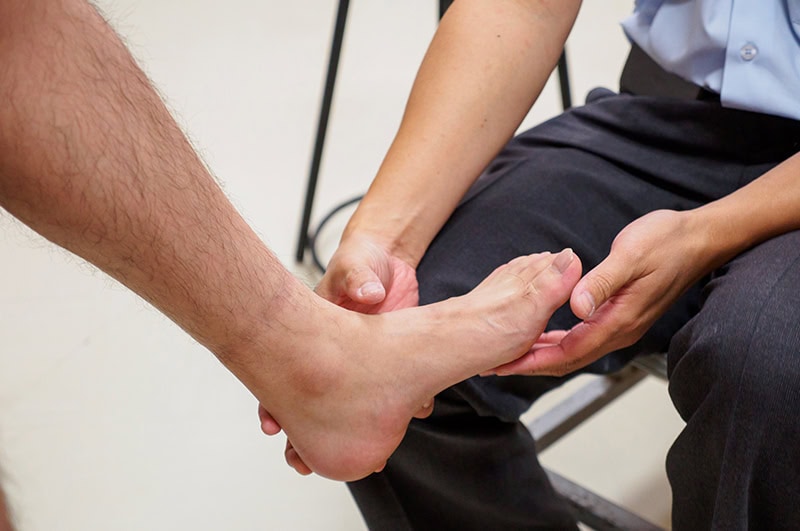
Plantar fasciitis can be a real pain in the heel, especially when conservative treatments don’t work. If heel pain has been going on for months and is impacting your daily life, it’s time to start looking into surgical options. At Vale Foot and Ankle, we specialise in minimally invasive techniques that get results with less downtime and less risk.
This guide covers the most common approaches for plantar fasciitis surgery and why minimally invasive is often the way to go.
When is Surgery Needed for Plantar Fasciitis?
Surgery is a last resort. Most people with plantar fasciitis get better with non-surgical treatments such as:
- Custom orthotics
- Physical therapy
- Night splints
- Anti-inflammatory medications
- Corticosteroid or platelet-rich plasma (PRP) injections
- Shockwave therapy
- Activity modifications and stretching
If these haven’t worked after 6 to 12 months, your podiatrist will assess surgical options. Surgery may also be considered earlier in severe cases where imaging (such as ultrasound or MRI) shows significant damage to the plantar fascia.

Surgery for Plantar Fasciitis: 3 Options
If you do need surgery for plantar fasciitis, the procedure will focus on relieving tension in the plantar fascia or removing damaged tissue. The main options are:
1. Plantar Fascia Release
This is the most common surgery for plantar fasciitis. It involves partially cutting the plantar fascia ligament to reduce tension and inflammation. There are two main types:
- Open Plantar Fascia Release: A traditional surgery that involves a larger incision in the heel or arch.
- Endoscopic Plantar Fascia Release (EPFR): A minimally invasive option performed through small incisions using a tiny camera and instruments. This usually means a faster recovery and less post op pain compared to open surgery.
2. Gastrocnemius Recession
Tight calf muscles can put extra stress on the plantar fascia. Gastrocnemius recession involves lengthening part of the calf muscle to reduce this tension. It’s a minimally invasive outpatient procedure that can improve mobility and reduce heel pain, especially for patients with limited ankle flexibility.
3. Ultrasound-Guided Tenex Treatment for Plantar Fasciitis
For those dealing with stubborn plantar fasciitis that hasn’t responded to rest, orthotics, or physical therapy, the Tenex Procedure offers a minimally invasive, ultrasound-guided option. It targets and removes the damaged tissue causing heel pain, without affecting healthy surrounding tissue.
-
Ultrasonic energy is used to precisely break down and remove thickened, inflamed fascia.
-
Performed as an outpatient procedure, it typically results in minimal downtime and faster recovery than traditional surgery.
This approach is ideal for chronic plantar fasciitis cases where conservative treatments have failed to bring long-term relief.

Why Minimally Invasive Surgery?
Minimally invasive foot surgery has become popular for plantar fasciitis due to several advantages:
- Smaller incisions (typically under 1 cm)
- Lower risk of infection or complications
- Reduced scarring
- Faster recovery times
- Less disruption to the surrounding tissue
- In many cases, patients can walk the same day in a post op boot
At Vale Foot and Ankle, we use advanced diagnostic tools to determine if you’re a candidate for these techniques. Our goal is to resolve heel pain while minimising surgical risks and recovery time.
Recovery After Plantar Fasciitis Surgery
Recovery times vary depending on the procedure and individual factors. A general timeline might look like:
- Week 1: Limited walking in a boot or supportive shoe. Ice and elevation recommended.
- Weeks 2–4: Begin light stretching and movement under guidance.
- Weeks 4–6: Return to normal shoes and gradually increase physical activity.
- Weeks 6–12: Full return to activity, with physical therapy as needed to restore flexibility and strength.
Minimally invasive procedures tend to have faster recovery than open surgery and many patients notice improvements within weeks.
Is Plantar Fasciitis Surgery Right for You?
Not everyone with plantar fasciitis needs surgery and most people get better with non-surgical care. However if chronic pain has persisted despite months of treatment surgery may be an option.

At Vale Foot and Ankle we take a patient first approach. We’ll review your treatment history, do a thorough evaluation—including imaging—and discuss if surgery is right for you. If so we’ll walk you through your options and what to expect every step of the way.
Minimally Invasive Surgery for Plantar Fasciitis: Faster Healing, Lower Risk
Surgery for plantar fasciitis is rare but when it’s needed modern techniques are better than ever. With minimally invasive procedures like endoscopic plantar fascia release and advanced ultrasound guided treatments you now have options that promote faster healing and lower risk.
If you’ve tried conservative care and are ready to take the next step, book a consultation with Vale Foot and Ankle. Our team are experts in the latest foot and ankle procedures to get you back to pain free living with precision and care.
